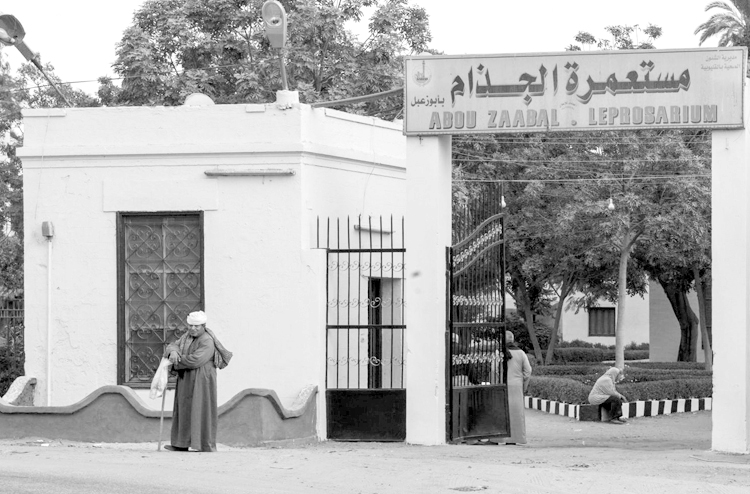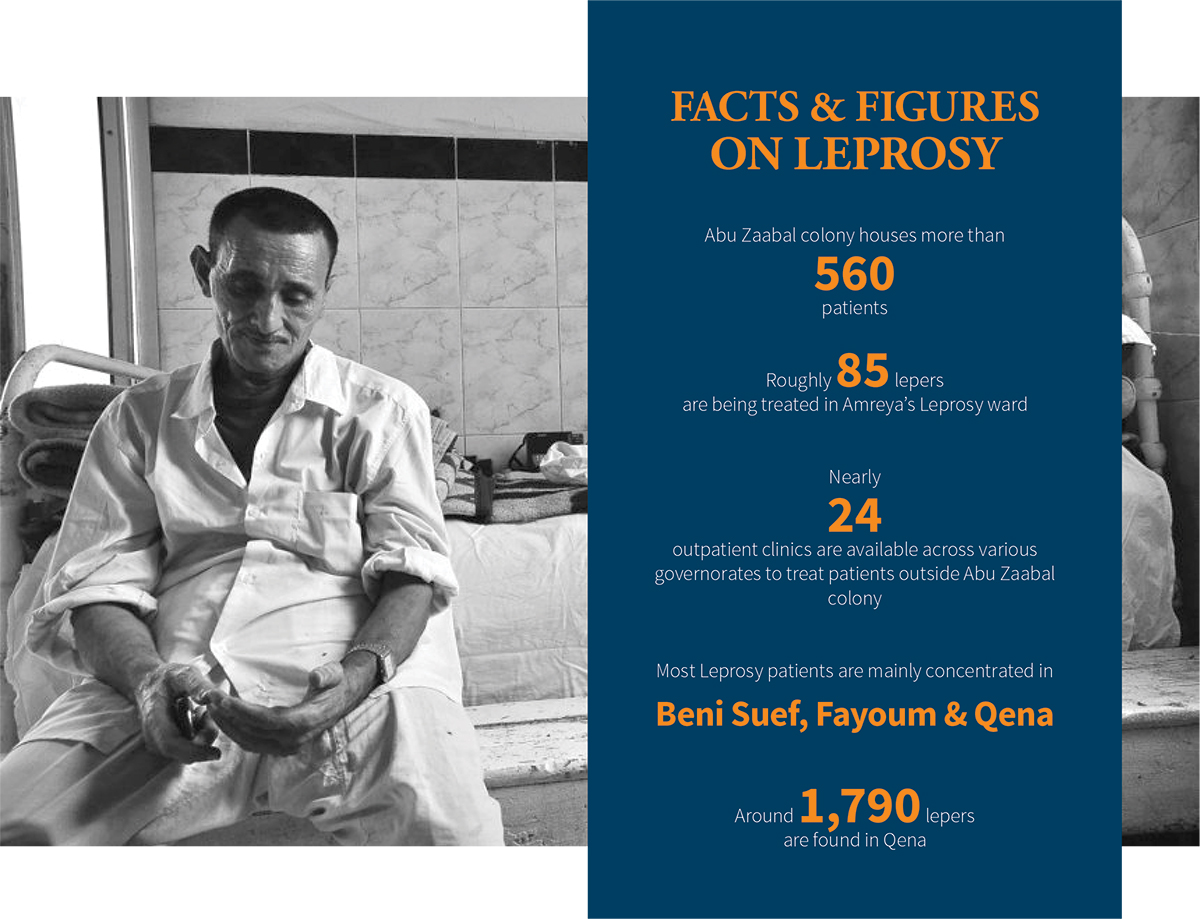As we celebrate Ramadan this year, we divert our attention to one of the unfortunate communities in Egypt. We delve more into their livelihood and document their daily struggles, aiming to enhance their living conditions. We take pride in adopting the leper colony of Egypt and fight for a cause for Ramadan is the #TimeToGiveBack.
Under the slogan “Time to Give Back,” Invest-Gate is to host its first real estate industry charitable Sohour “Bab El Ezz,” this Ramadan, giving back to the leprosy community across Egypt. Through the event, Invest-Gate aims to collect massive donations from the country’s top developers for supporting leprosy patients and supplying them with medicines, while helping to conduct operations whether optical surgeries or amputation of affected limbs and joints. Generally speaking, proceeds will be directed toward providing the community with basic life necessities.
https://www.facebook.com/investgateofficial/videos/2272058303113555/
What image does leprosy conjure up in your mind? Depictions of the disease on TV, films, and Internet, which only paint a fantasy picture of all leprosy patients being severely disfigured, could perhaps be a driving factor behind the prejudice surrounding the illness. The reality, however, is far different.
Leprosy, also known as Hansen’s Disease, is a chronic disease that affects skin, peripheral nerves, upper respiratory tract, and eyes, resulting in physical deformity and disability if left untreated. Despite a centuries-long stigma, which certainly is as painful as the symptoms, leprosy is not hereditary and not highly contagious.
In fact, the World Health Organization’s (WHO) latest figures showed that more than 85% of clinical cases are non-infectious and curable with multi-drug therapy (MDT), which prevents transmission of the disease, only if caught early enough and can prevent the disability associated with a late diagnosis. Leprosy is likely transmitted during close and frequent contacts with untreated cases.
Epidemiology of Leprosy in Egypt

“Since 1994, Egypt has met WHO’s global leprosy elimination goal of reducing prevalence to less than one per 10,000 population; however, there are still governorates, in which prevalence rates are higher. Sustained efforts since 2004 have reduced the number of these governorates,” pursuant to the WHO Regional Office for the Eastern Mediterranean (EMRO) in May 2018.
“Almost 60% of new cases detected each year in Egypt are from only six governorates, across Upper Egypt. These governorates have not yet reached the national elimination goal. Approximately 6% of new cases reported annually are children under 15 years of age,” EMRO underlined.
Digging deeper into Egypt’s leprosy sufferers, in 1932, long after the disease appeared, the Ministry of Health founded the first specialized hospital to fight against Leprosy, known as “Abu Zaabal Leper Colony.” The institution is located an hour north of Cairo, tucked away in the no man’s land of Abu Zaabal and is surrounded by a vast desert and military factories. Since established, the colony has gone from dire circumstances and lack of funding to a relatively well-organized government facility.
In addition to the Abu Zaabal colony, another leprosy center exists in Amreya, Alexandria, though it is more of a hospital that can accommodate no more than 50 patients.
However, Dina Hussein, a member of the Friends of Leprosy Patients Association, argues that efforts to curb the disease are met with stiff resistance from patients themselves for choosing to remain secluded and avoid seeking treatment, leaving the number of new cases stagnant. This is due to the fact that lepers are often ostracized and alienated in the Egyptian society, even by their own families, due to some beliefs and stereotypes that eventually led to the isolation and segregation of communities of people affected by Leprosy.
Hussein further tells Invest-Gate:
“Earlier, the government hired nuns from abroad to treat patients of the Abu Zaabal colony because no Egyptian nurses would come near the place,”
Leprosy patients “suffer from other diseases just like everyone else, including blood pressure, diabetes, kidney problems, amongst others, and regular hospitals refuse to admit them for everyday ailments.”
“Leprosy is still shrouded in myth. Just like AIDS, the fear is particularly manifested in doctors or surgeons who are afraid to be exposed and be in contact with leprosy patients, leaving them untreated and neglected,”
There is no hospital in Egypt that allows performing any surgeries or operations on lepers, except for Caritas Egypt, an affiliate to Rome-based Caritas Interna- tional Confederation, which is dedicated to enhancing the lives of patients in the leprosy hospital, while collaborating with public hospitals to treat those who cannot afford good medical care.
Challenges of Leprosy Disease

Without treatment, leprosy can permanently damage the patients’ skin, nerves, arms, legs, feet, and eyes. According to Hussein, the majority of patients have residual problems, mainly loss of sensibility in hands, feet or eyes – with or without motor paralysis and attendant deformities. The affected parts are certain to develop further complications and secondary impairments like ulceration of soft tissue, stiffness of joints, and destruction of skeletal architecture, particularly if they are not well cared for. Inevitably these complications will worsen the disability, make correction of the deformities very much more difficult or impossible, and eventually cripple the patient severely.
“However, the occurrence of these secondary impairments can be contained altogether by taking the necessary measures,” Hussein confirms. For starters, surgery, as an intervention in the management of leprosy and its complications, is performed on patients- already under anti-leprosy treatment or after they have completed it satisfactorily. Therefore, preventive and corrective surgeries like nerve decompression, tendon transfers, and partial amputations are seamlessly integrated into their course of treatment.
But with medical practitioners refusing to be in close contact with lepers, alongside being absolutely isolated and discriminated against, those affected by the disease are left with limited places when it comes to surgical interventions, namely Abu Zaabal Leprosarium and Caritas Hospital. In spite of that, “leprosy patients still call for access to basic medical care.”
According to Hussein,
“Abu Zaabal colony lacks the devices and types of equipment necessary to perform such surgeries and operations… In addition, remedies used for treating diseases other than leprosy are also inadequate to medicate all patients.”
On top of that, “the MDT is free in all government hospitals but there are no sufficient funds for further medical care to other illnesses such as diabetes, kidney failure, and so on,”
Leper Colony in Need

When asked about ways of containing such shortage, Hussein urges the entire nation to help depict a positive image of leprosy and increase awareness about the disease among members of the society, while providing the adequate finances towards those patients.
Interested donors can contribute to offering a better quality of life to leprosy patients, through the provision of funds directed toward providing the necessary surgical procedures, devices, equipment, and medications. To name a few, autoclaves cost EGP 7,000 per device, while intracapsular cataract operations, which are undergone to prevent leprosy patients from blindness, vary between EGP 15,000 and EGP 200,000, according to Hussein.
After all, the ultimate goal for leprosy patients in Egypt is an ambitious one, whether to live a normal life within their communities or even receive adequate treatment and go on with their lives. However, public perception toward these sufferers needs to be changed first for them to be able to have access to their basic necessities and human rights.
“You cannot imagine how happy a leprosy patient is when you just shake his hand … It is like you are telling him that he is still a human being… that he is worth it,” Hussien concludes.
A very special gratitude we ought to give to one shining Egyptian filmmaker Abu Bakr Shawky, who shed light on this lost community in his dramatic humanitarian “Yomeddine” film that was critically acclaimed during the Cannes Film Festival last year. Because of him and his leprosy patient star Rady Gamal, this community would have been forever forgotten.
More on Leprosy and Leper Colony can be found on pages no. 20-23 at our May issue.